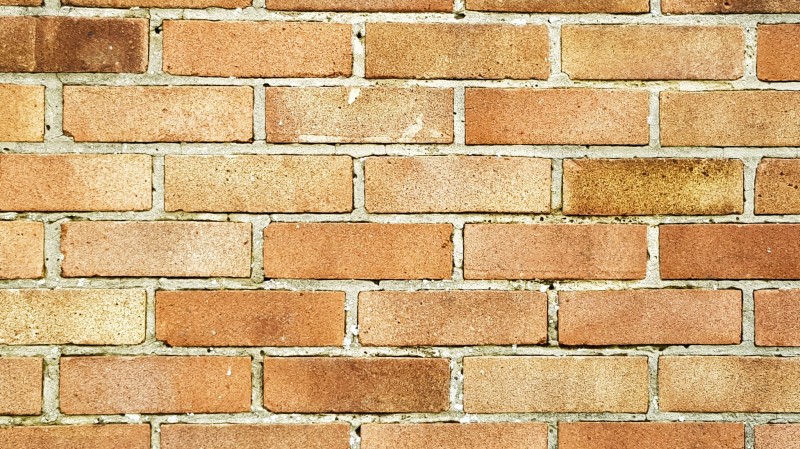You are here: Building with bricks: is it eco-friendly?
We look at the green credentials of modern masonry
Bricks have been used to build homes for thousands of years, dating back to the sun-dried mud brick and evolving to today’s kiln-fired version. Of course, it’s not the only option; timber frame and structurally insulated panels (SIPS) are popular with home extenders too. Deciding exactly how to build your extension is one of the biggest decisions you will face. The impact your project may have on our planet may be something you consider. Perhaps you are wondering if building with bricks is eco-friendly or if there are greener alternatives out there?

Manufacturing
Energy sources used in the clay brick making process are mostly derived from fossil fuels. Traditionally kilns were powered by coal, oil or liquid gas petroleum, resulting in the release of excess carbon dioxide, some monoxide and other contaminants. Modern environmental legislation means that most kilns in the UK are now gas fired and cleaner burning. Renewable fuels, including biogas, have been identified as possible solutions to reduce greenhouse gases resulting from the firing process to almost zero. Other innovations include reusing waste heat and recycling materials to reduce the need to quarry new clay.
Traditional brick production requires extensive mining operations which also brings negative environmental impacts, so brick’s green credentials need to be viewed in this context.
Low embodied energy
It’s not all bad news on the eco-front. The clay used to make bricks is a natural, abundant resource in the UK. According to the Brick Development Association, the average delivery distance from factory to the building site is less than 68 miles. There is no need to transport the bulk of your building materials long distances, so reducing the overall embodied energy of your project – that is the sum of all energy required to build your extension. Where possible, sourcing bricks made from local clays may also be viewed favourably by council planners as it will help your extension fit in with the architectural style of the area.
Bricks are robust and long-lasting
Sustainable construction materials need to be long-lasting. Bricks are highly durable. Hampton Court Palace, is an example of brick’s longevity, standing for over 300 years. Victorian terraced housing also show how masonry can withstand the wear and tear of multiple generations. According to the Brick Development Association, modern brickwork can be expected to last a minimum of 150 years. Many bricks will last a lot longer. Brickwork is robust and will require minimum maintenance compared to more regular upkeep for rendering and timber, says the trade body.
Brickwork also weathers well. On the downside, masonry projects can be relatively slow to build on site, especially compared to timber structural systems – and bad weather can delay work. Brick and block will also take longer to make weathertight compared to timber frame, between 15 to 20 weeks.
Bricks have a high thermal mass
One of the biggest benefits of brick is high thermal mass, which means it stores and releases heat over time. The sun’s warmth is absorbed by clay bricks during the day before radiating out, reducing temperature fluctuations within a building. In other words, bricks reduce the risk of overheating during the day and slows the fall in temperature overnight. This in turn can make for a more comfortable home, less need for heating or air conditioning and potentially lower energy bills.
Bricks can be re-used and recycled
When buildings are demolished, bricks can be salvaged, cleaned and reused. It’s easier to recycle and reuse bricks than timber or SIPs. When knocking down walls, for example to build a rear or side return extension, salvaging bricks should always be the first option.
As well as being reused, bricks can be recycled into other building materials. Old bricks can be crushed into rubble on site and turned into aggregate materials for hard core and landscaping, further extending the raw material’s lifecycle.
Airtightness & insulation
Most modern masonry homes are built using a cavity wall system. The exact specification will depend on your project, but a typical cavity wall may consist of a blockwork skin, a gap that gets filled with insulation and an external wall of facing bricks. Despite the inherent thermal benefits of brick, it’s only possible to achieve high levels of energy efficiency with insulation.
The main options for a masonry project are expanded polystyrene sheets, rigid-foam PIR boards and mineral wool. Building Regulations lays out the minimum standards for heat loss that you’ll need to achieve, known as U-values. Masonry has many junctions where air can leak through a building, for example a duff mortar joint. Ultimately, the airtightness of this structural system will depend on the quality of workmanship on site, so it is regarded as less reliable by some than factory-made SIPs.
Details such as wall tie choice are important. Wall ties are an essential element in the strength of a cavity wall, but by crossing the insulated cavity they act as a thermal bridge, providing a path for heat to escape you’re your extension. Modern cavity wall ties, made from plastic and composite materials, are especially designed to create thermal breaks, improving energy performance.
Bricks are generally regarded as one of the more eco-friendly building materials. The environmental impact of the production process is mostly due to the consumption of energy in the firing of bricks and quarrying of raw materials. But bricks are highly durable, low maintenance, offer long-term performance and can be re-used and recycled. With plenty of insulation and high-quality workmanship, it’s perfectly possible to achieve a highly airtight masonry extension.
If you are looking to make some home improvements, you may find some of these services useful
Building Regulations
Find details of local experts who can help with Building Regulations
Builders
Find local help with a building project
Architectural Design Services
Find local Architectural Design experts
Structural Inspections
Find an expert to carry out a structural inspection
Building Surveys
I want a local surveyor to do a Building Survey for me
Choose which Architectural service you require
If you are not sure which service you require, check out the options available...


